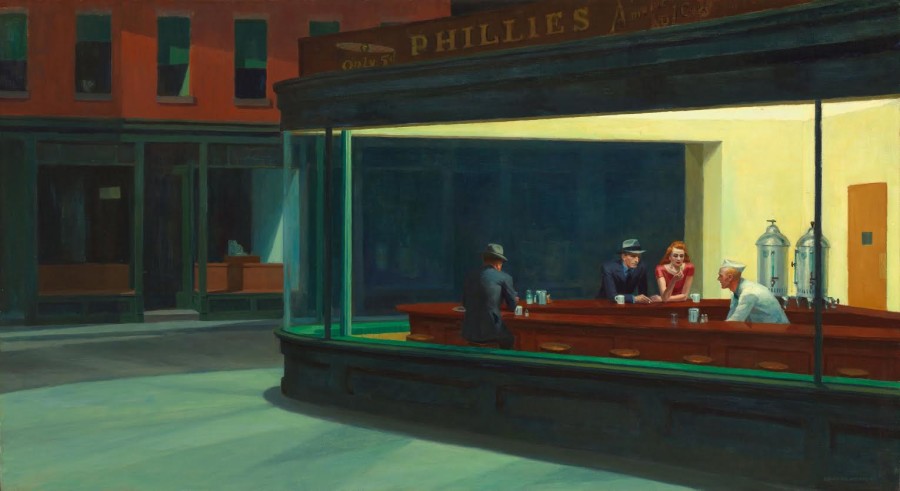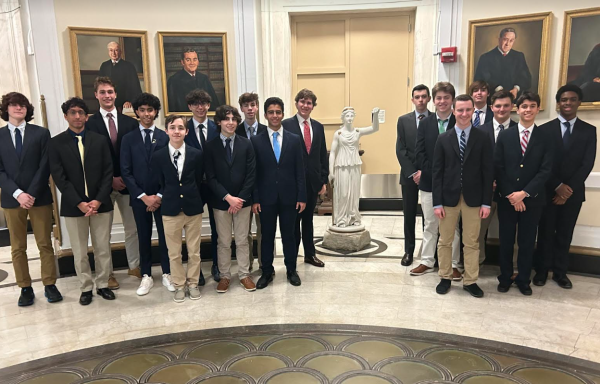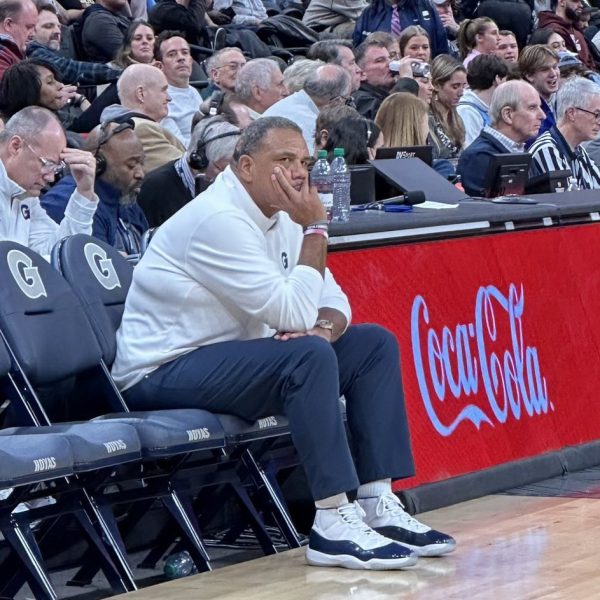Edward Hopper: An Artistic Take on Isolation
November 27, 2015
Edward Hopper is a figure I admired. Edward Hopper was born on July 22, 1882 in Nyack, New York. Hopper was the youngest child in a well-educated middle class family. He pursued his goal of being an artist around the age of five. He advanced his artistic skill in both grammar and high school. He experimented with many forms of art from impressionism to realism while using different techniques like oil and watercolor.
Edward Hopper was always considered a treasured artist. While other people may write about George Washington and Abraham Lincoln which is fine, I wanted to write about one of my favorite artists. The way he depicted everyday lives of the American people is extraordinary. To the average person, they know him mainly for “Nightawks” the dedication of a late night diner, which is one of my favorite paintings. I know him for his lesser known works such as the “American Village” and “New York Movie.” Hopper once said “My aim in painting has always been the most exact transcription possible of my most intimate impressions of nature.” Edward Hopper is one of the most adored painters and provokes something in you that words cannot explain.
Hopper’s paintings are graceful, peaceful and reflect a form of isolation. His painting are real, but not too real. While realists artists like Gustave Courbet and Thomas Eakins stride for detail which made their painting almost photographic, his paintings are held back on purpose. Hopper doesn’t want his work to be photorealist but rather he wanted his paintings inviting the viewer to enjoy them. While he grew up in Nyack, New York and spent the summer in Cape Cod, he did not try to copy these places but instead he mimicked them in a way for them to be recognizable but couldn’t be pinpointed on a map. For example, Greenwich Village, New York which was believed to be the location of the diner in NightHawk. After years of verifying this location, it turned out not to be there. Hopper mentioned that there was a diner on Greenwich Avenue that he drew inspiration from but there is no actually diner there.
The majority of Hooper’s themes are isolation, loneliness, and estrangement. These themes are undeniably present in Hopper’s greatest work, “Nighthawks.” It illustrates four people in a diner at night. There are three customers and one waiter. The relationship between the four people are a mystery. We can assume that the girl in the red dress was inspired by Hopper’s wife Josephine Hopper, and the man next to her knows her. The painting shows their hands overlay but they don’t touch. The main piece of the painting is the diner. It illuminates the street while the rest of the town is asleep. From the point of view of the painting, you barely see the door to the diner. The inability to see the door makes the diner even more isolated than was expected.
The one thing that Hopper’s paintings have in common is the angle. “Nighthawks” is portrayed at a weird angle like of a person crossing the street. The viewer’s point of view never stands right at the edge of the subject. Instead, the viewer always look at an angle. In “Nighthawks,” the viewer sees the back and the side of the waiter, the back of the lonely man, and side angle of the man and the girl in the red dress. Another example would be his other painting, “Automat.” We see the girl staring down at her coffee but not staring at the viewer. The girl in the painting, again portrayed by his wife, is staring at her coffee demonstrating her boredom and loneliness. We see another example of isolation with the “Automat” being empty and the dark of the night is the only thing we can see from the window.
Hopper was a perfectionist, he took weeks and months to finish a single painting. He would make many sketches before creating the final piece. Hopper believed that the more work he exerted, the more the audience would appreciate it. Hopper was hung up on light in his painting, shown by his use of different shades and shadows of light. All of Hopper’s people are estranged, waiting, and are bored. The patrons in “Nighthawks” are no exception. When we are bored or lonely we feel time passing, everything starts to slow down. Like the diner that lit up the street, Hopper use of light shows us a new way to look at isolation.










